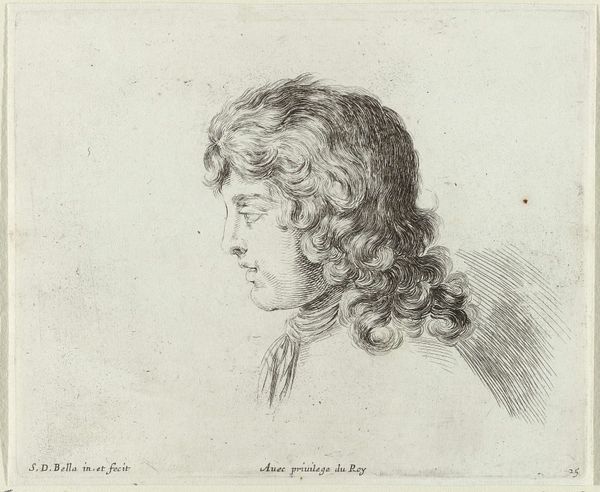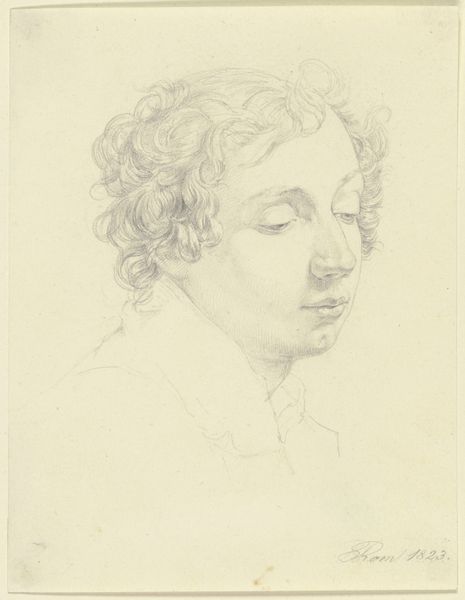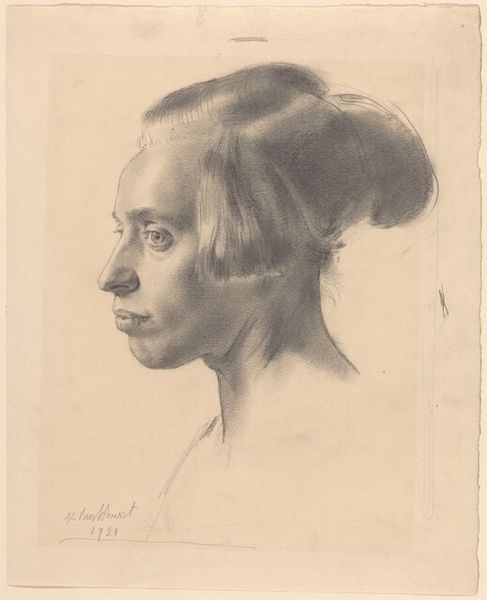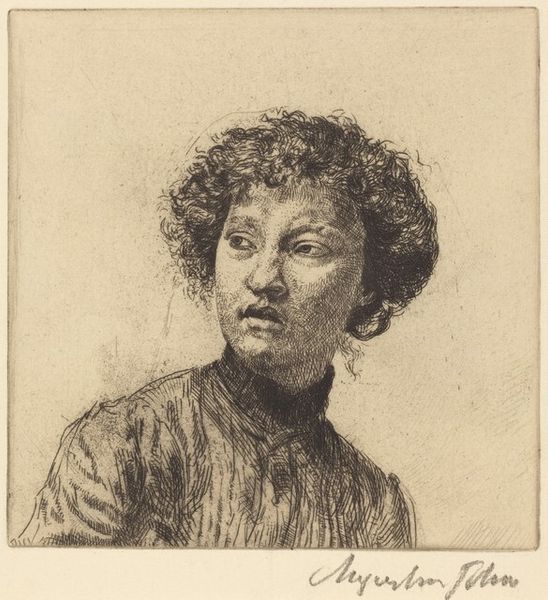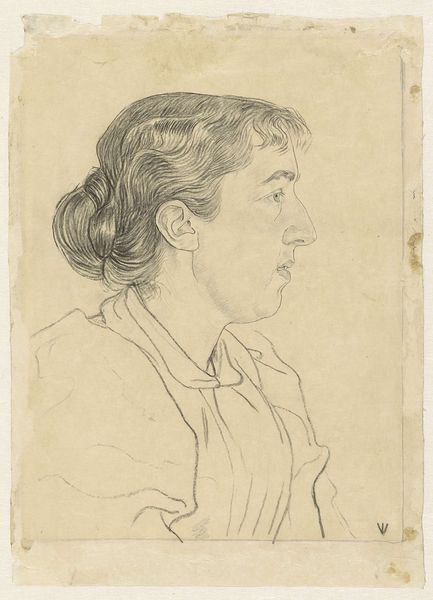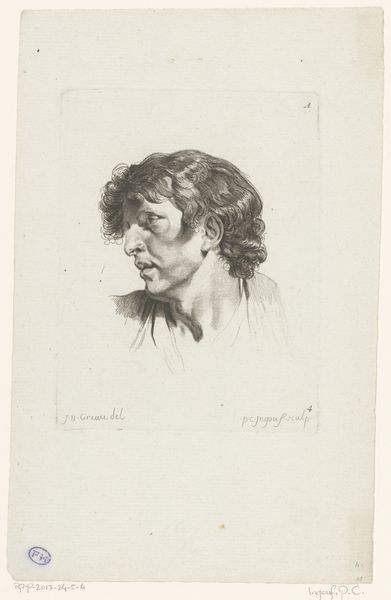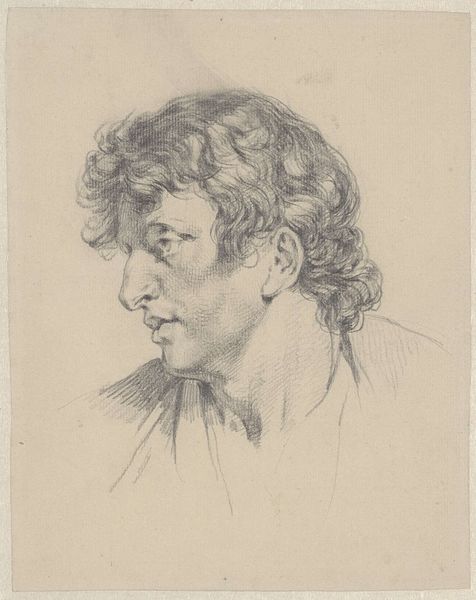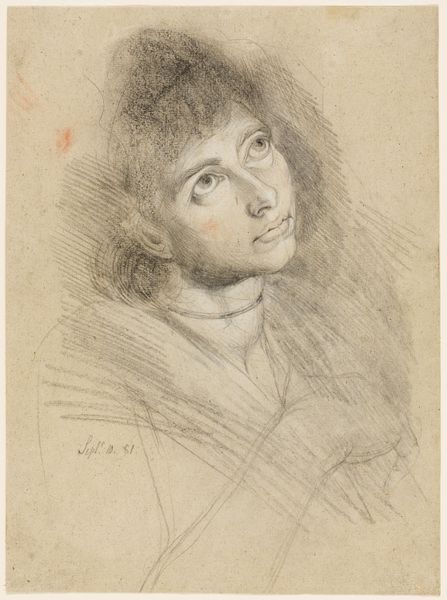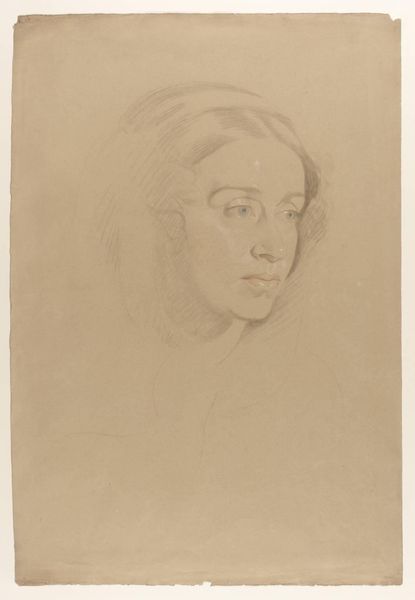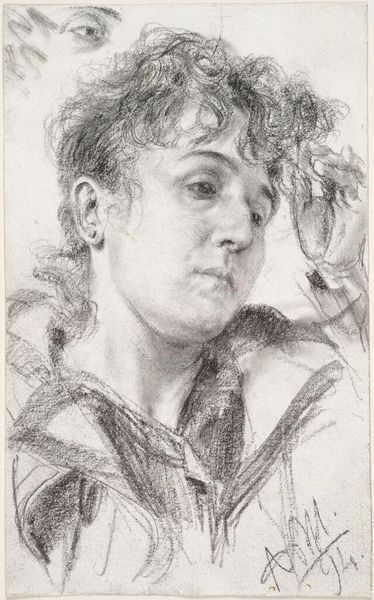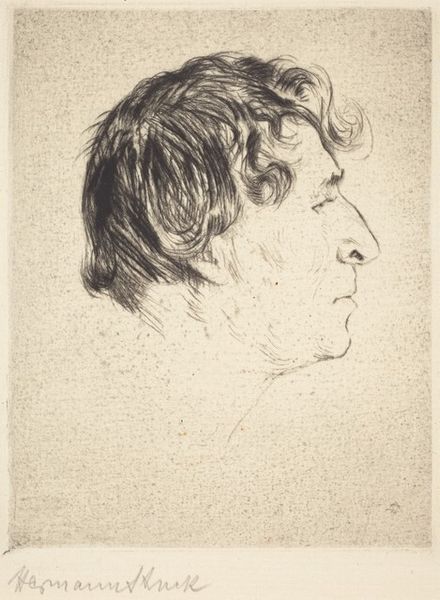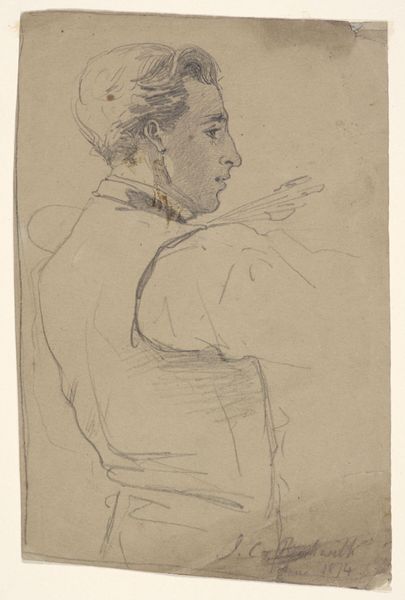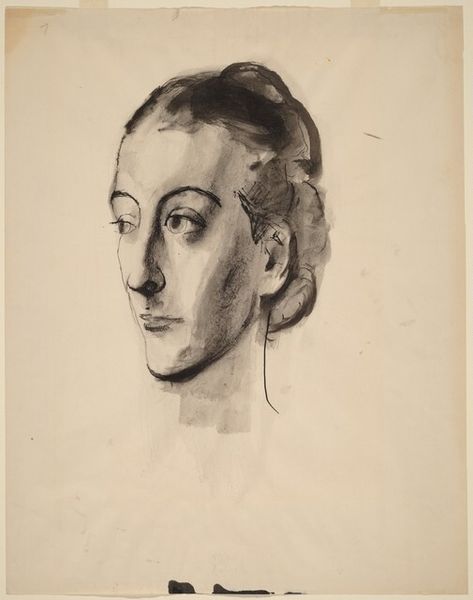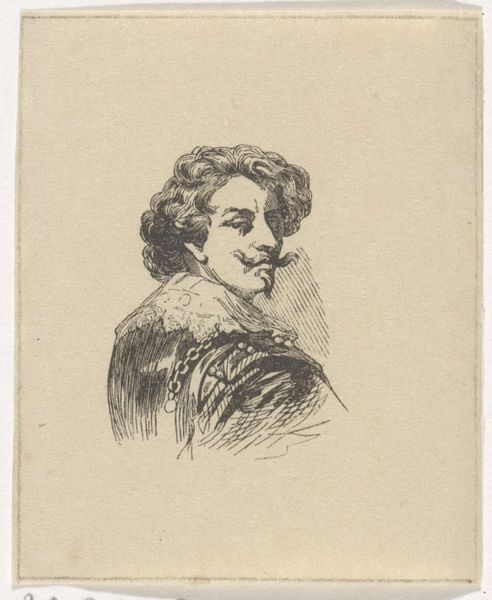
drawing, print, pencil
#
portrait
#
pencil drawn
#
drawing
#
facial expression drawing
#
light pencil work
# print
#
pencil sketch
#
charcoal drawing
#
portrait reference
#
pencil drawing
#
pencil
#
animal drawing portrait
#
portrait drawing
#
pencil work
#
academic-art
#
realism
Dimensions: plate: 27.5 x 21.9 cm (10 13/16 x 8 5/8 in.) sheet: 38 x 337 cm (14 15/16 x 132 11/16 in.)
Copyright: National Gallery of Art: CC0 1.0
Curator: This is Robert Austin's "Study of a Girl's Head," created in 1936. It's a print, primarily rendered in pencil. Editor: It's striking! There's such an emphasis on the face, especially around the eyes and mouth. It makes her seem thoughtful, almost melancholy. You can see the different pressure he exerted while layering the pencil. Curator: Austin was deeply invested in the academic tradition. It's important to remember the art world of 1936, emerging from the Depression, grappling with new social realities, and art institutions played a key role. You have a classical simplicity of form, almost a Renaissance feel but interpreted through a very modern lens. It represents a broader need for an aesthetic anchor, looking backward to validate the present, one of tremendous tension at the time. Editor: Absolutely, and I’m seeing his facility with pencil. Look at how the lines define her form and her material presence. It’s not just an airy sketch. You sense the grain of the paper, the graphite worn down with use. The intimacy suggests it’s from life—from observation, almost an act of recording or crafting of the everyday, a way of elevating ordinary working class people. Curator: And portraiture itself at that moment, especially in print, became a powerful vehicle for identity formation. Think of the rise of propaganda imagery, news photography. Portraits in art function to reinforce or challenge specific social identities and even artistic authority. Who is deemed worthy of portrayal speaks volumes. Editor: Yes, this piece speaks to how we construct value in both art and labor, wouldn’t you agree? You’re prompted to question what the artist values, beyond merely rendering a likeness and presenting her as this interesting mix of demure yet modern. Her hair is styled fashionably with those hoops, but the overall affect leans on traditional art portraiture styles. Curator: That tension between tradition and modernity, mass culture and high art, is exactly what makes this such a fascinating, and resonant piece. Editor: Indeed. It speaks of its time, even as it transcends it through its artistic rendering and accessible medium of pencil on paper. We’re challenged to reflect on material accessibility to art-making as well.
Comments
No comments
Be the first to comment and join the conversation on the ultimate creative platform.
